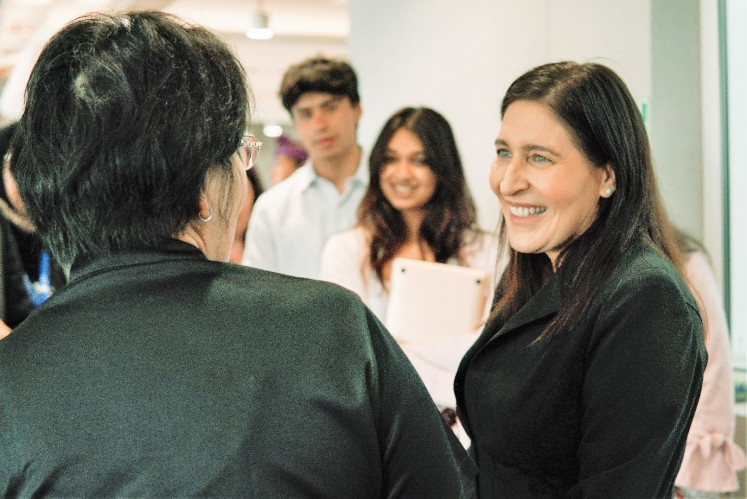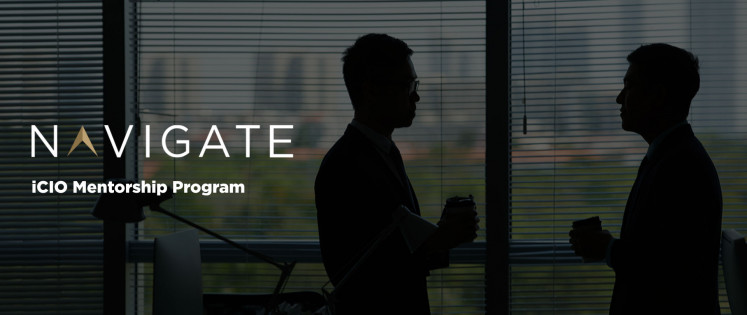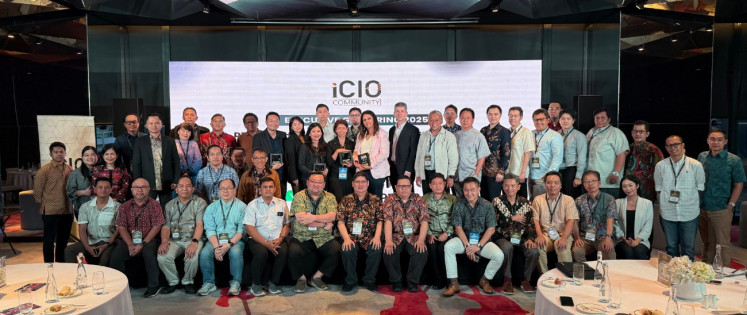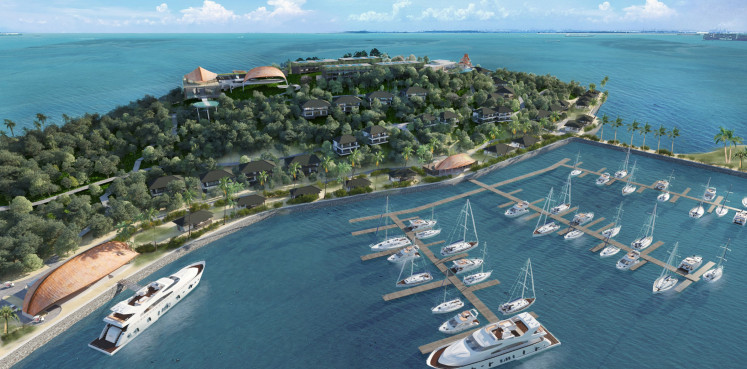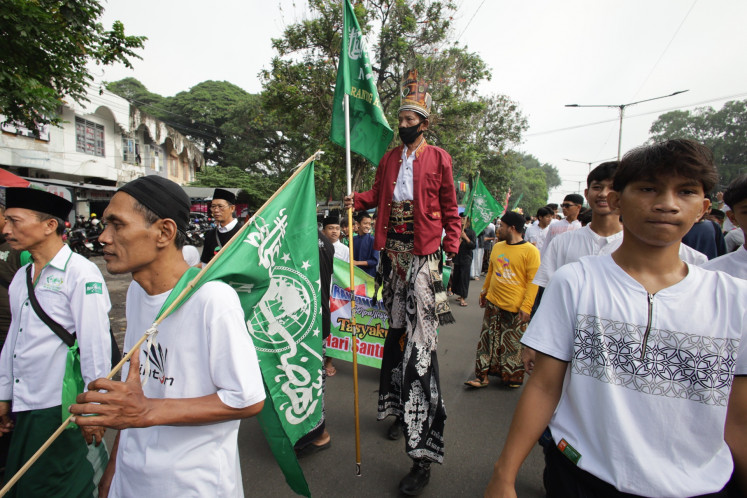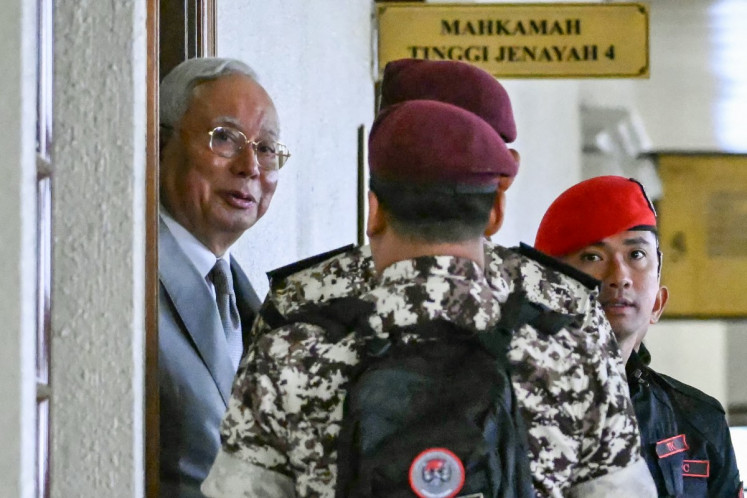Popular Reads
Top Results
Can't find what you're looking for?
View all search resultsPopular Reads
Top Results
Can't find what you're looking for?
View all search resultsThe Coca-Cola Company works to support water security and waste management
“Let me start with the company's purpose, it's ‘Refresh the World and Make a Difference’. Making a difference is where we bring a lot of the sustainability work to life because we know we can’t refresh the world and grow the business if we’re not doing it responsibly.
Change text size
Gift Premium Articles
to Anyone
“Let me start with the company's purpose, it's ‘Refresh the World and Make a Difference’. Making a difference is where we bring a lot of the sustainability work to life because we know we can’t refresh the world and grow the business if we’re not doing it responsibly. My role is to set the vision, strategy and targets and make sure we’re delivering,” said Beatriz “Bea” Perez.
Bea is currently serving as senior vice president and chief Communications, Sustainability & Strategic Partnerships officer for The Coca-Cola Company. An enormous part of her job involves setting global strategy, policy and targets for sustainability, as well as building partnerships with other companies and nongovernmental organizations to improve waste management and increase water security around the world.
In line with the company’s overall vision to make a difference, Coca-Cola focuses on two things: replenishing the water used in its products and driving sustainable packaging to support a circular economy. Whether it is creating new company policies or launching new community projects, Bea and Coca-Cola take it upon themselves to do what they can to make an impact and improve people’s livelihoods.
Water security
The Coca-Cola Company set a global goal in 2007 to replenish 100 percent of the water it used in its finished beverages, a target it delivered in 2015. It previously announced that it had replenished an estimated 153.6 billion liters of water back to communities and nature through 209 community water projects in 61 countries since 2004.
“If you look at all of our products, you can’t have a beverage without water. Society does not thrive without water, it’s connected to everything,” Bea said. “Whether it's droughts, floods or other water-related disasters, the world today is experiencing increased water insecurity and we have a continued responsibility to help those who face water scarcity and help protect local water resources where we operate. We have to accelerate our actions to increase water security.”
Revealing that she had spent almost 10 years working on water, she recognizes that Coca-Cola, as well as the fast-moving consumer goods (FMCG) industry, share an accountability to contribute to better water management practices and to support the community with access to clean water.
Hence, Coca-Cola was one of cofounders of the 2030 Water Resources Group (2030 WRG) to develop innovative solutions to water challenges all over the world to achieve water security by 2030. Working alongside other companies in the sector as well as public institutions and civil society organizations, they are working toward a common goal to ensure a world with enough safe water for people, the environment and the economy.
“There are so many issues globally around water, whether it’s lack of access or sanitation connected to it. We know that we can’t solve that alone, so we are actually one of the cofounders of the 2030 Water Resources Group. We invited our partners, and all the CEOs, to have a seat at the table and say we know we have to solve these challenges around the world, and this is a place where we can work together and make an impact,” Bea said.
The World Bank Group hosts the 2030 WRG and serves as a facilitator for the strategic public-private partnerships that are being implemented. Along with NGOs and external third parties, including government partners, an independent board pinpoints the places that are the most high-risk in terms of water resources and decides where the funds will go and what can be done to relieve the problems in that specific area. The model thrives on collaborative action.
“It's been interesting because when they come in, they take off their company hats and put on their hats for society and so it’s a different conversation. It took me some time to get used to because it’s not every day that businesses sit next to their competitors and have these conversations,” Bea said.
Furthermore, she took it upon herself to talk to the people in communities who are living without water security, traveling to 50 countries her first year as chief sustainability officer for Coca-Cola. A trip to communities in India made her realize that a part of solving the problem was to listen and find solutions not just for the company, but also for the needs of the local community.
Circular economy and packaging
The 2030 WRG also inspired Coca-Cola to tackle another pressing global problem, plastic pollution and waste management, through collaboration with different stakeholders. The company is highly focused on it vision for packaging to be reused and recycled as part of a circular economy.
“Unlike many other kinds of plastic packaging, the PET used in our bottles is a valuable commodity that can be recycled again and again. We’re taking a holistic approach. If we get the work done right on packaging, we can deliver one third of our target assigned on carbon reduction,” she said.
Today, the company focuses more on packages that are designed with sustainability in mind, without having to sacrifice the safety and taste of the beverage itself. However, they also focus on what is done after the last drop of the beverage is consumed. The company emphasizes the collection of bottles and cans, and Bea admires what is being done in Indonesia in terms of job creation and the support to the local community including the ecosystem of informal collectors.
“For us, we recognize there’s a real plastic pollution issue, a packaging waste issue, and we said we need to get more focus on what we’re doing, reduce down the amount of the material we use to create our packages through light-weighting, design better materials but then also work to create that circular economy and collect the packages back in and reuse it,” she said.
In 2018, Coca-Cola launched its global World Without Waste program with the aim to collect and recycle a bottle or can for every one it sells by 2030. The company is about 59 percent on the way to that goal, despite the on-the-ground challenges to packaging collection posed by the pandemic.
As a matter of fact, the reason she flew halfway around the world to Indonesia is to look at the new recycling facility in Cikarang. The president director of Coca-Cola Europacific Partners for Indonesia and Papua New Guinea Jorge Escudero revealed to VOI publication earlier this year that the facility, known as PT Amandina Bumi Nusantara, was able to produce 25,000 tonnes of recycled PET plastic per year – helping to alleviate some of the plastic waste problem in Indonesia.
“It was great to see the new facility. They already had everything done. It’s now about advancing the work and getting focused and expanding the collection of our PET bottles so we can make sure that we get the bottles back. Partnership is more critical than ever and together with our partners we are making a lot of progress in the region, with lots more to do,” said Bea, crediting the team in the region with the momentum, as she shows her excitement on what the future holds.


